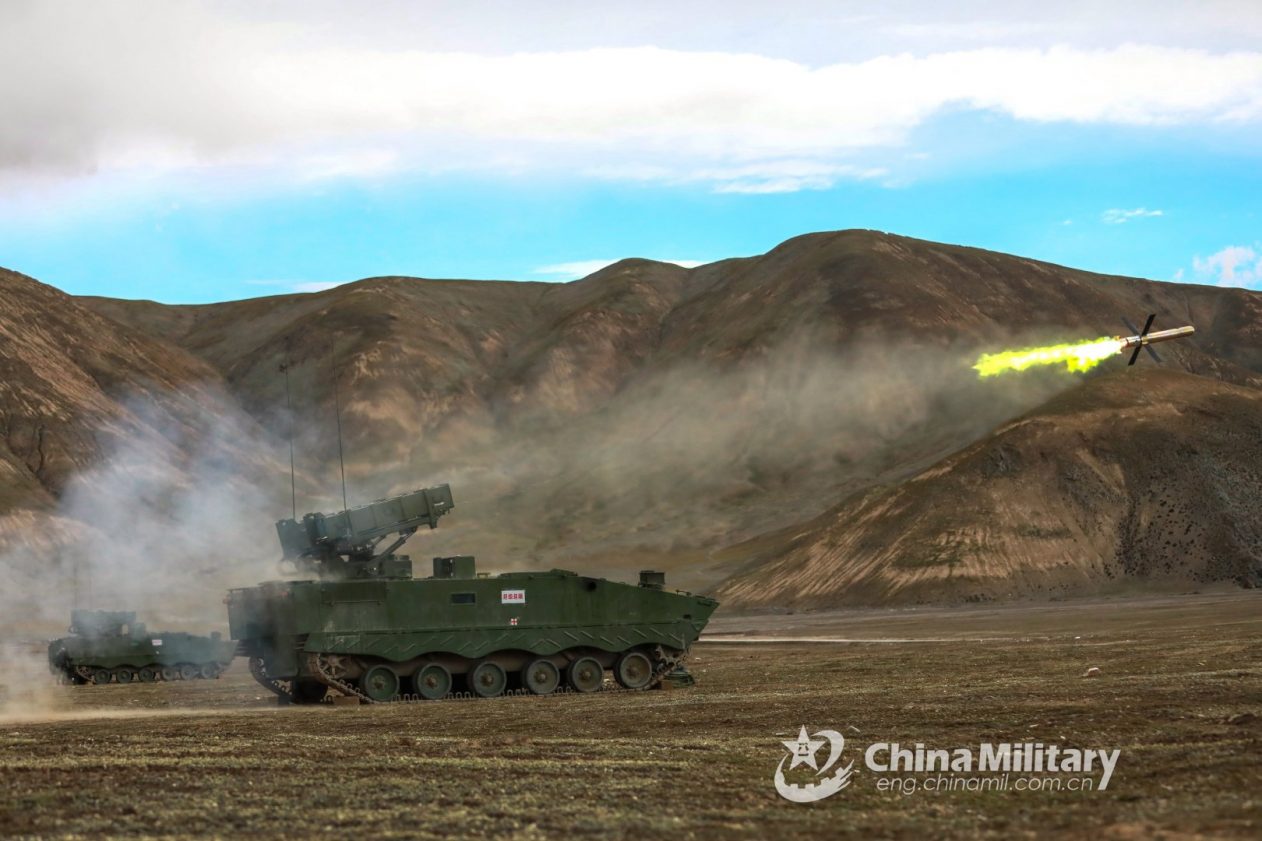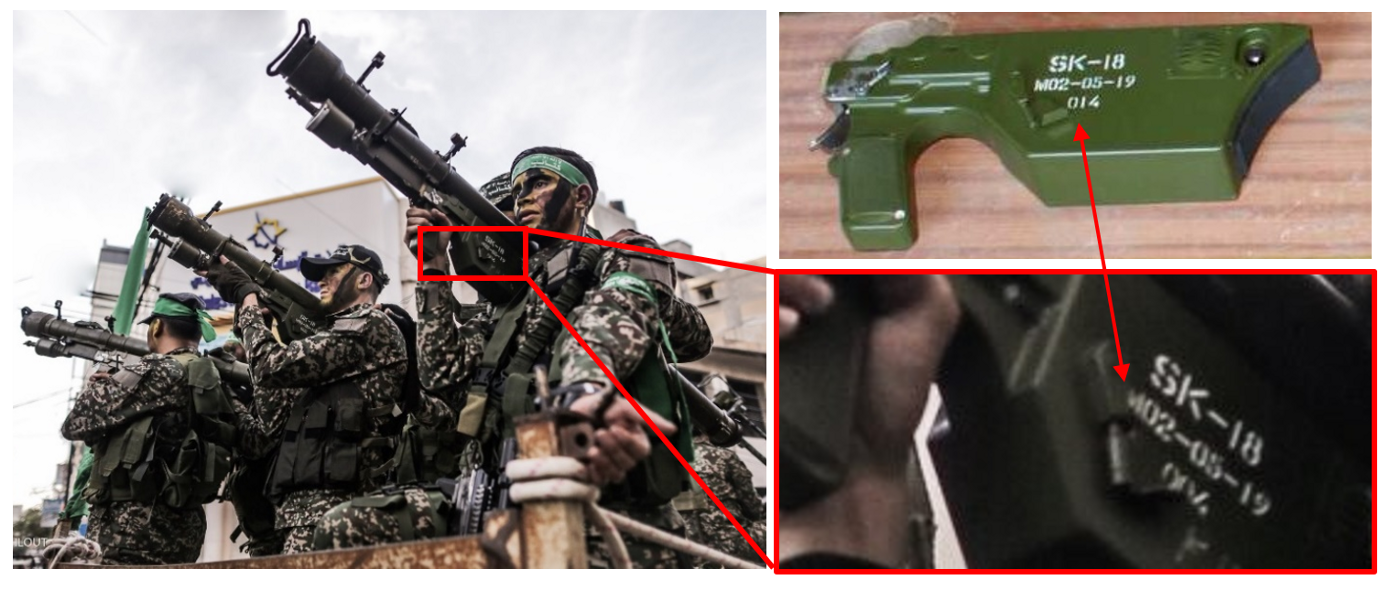A recent survey on the proliferation of man-portable air defense systems, or MANPADS, has found a significant uptick in the illicit trade of advanced Chinese-designed shoulder-fired surface-to-air missiles over the past decade.
MANPADS has been in the news for the past couple of months because of the ongoing Ukraine war, which has seen many US-made Stingers and other advanced types from other nations flowing into Ukraine.
However, the latest study by an independent monitoring group, Small Arms Survey (SAS), only covers data relating to the period between 2011 and mid-2021 before Russia launched its all-out assault in Ukraine.
The Largest Source Of Illicit MANPADS
The arms monitoring organization identified reports of illicit MANPADS acquired by non-state actors in 32 countries and territories on five continents since 2011, ranging from pro-Russian separatists in Ukraine to ethnic armed groups in Myanmar.
It found that the vast majority of illicit MANPAD activity since 2011 has occurred in the Middle East and North Africa (MENA), which accounted for 74% of the total activity, followed by Europe with 14%.

While, Sub-Saharan Africa and Central/South Asia had 6% and 3% of reported cases, respectively, and the Western Hemisphere and East Asia each accounted for around 1%.
Among these MANPADs, distribution of third and fourth-generation weapon systems was even more concentrated in the MENA region and Europe, with these two regions accounting for 96% of all reports identified by the survey.
Notably, the survey identified only five reports of illicit advanced MANPADS in East Asia, Central/South Asia, and Sub-Saharan Africa combined — a dramatic shift from the 1980s and early 1990s when armed groups in South Asia and Sub-Saharan Africa acquired dozens, possibly hundreds, of third-generation US and Soviet MANPADS.

The largest source of illicit MANPADS remains the first-generation systems designed by the former Soviet Union.
“First-generation SA-7-pattern MANPADS remain the most numerous and widely proliferated illicit MANPADS worldwide,” says the Small Arms Survey report. It added that the Soviet-designed systems were identified in 23 of the 32 countries and were the only model of illicit MANPADS identified in 12 countries.

Most of the remaining reports also feature Soviet-designed systems, namely SA-14, SA-16, or SA-18 pattern MANPADS, which, combined with the SA-7s, account for 81% of all reports identified by the model and 85% of the substantiated words.
“The continued prevalence of illicit Soviet MANPADS, which the Survey also identified as widely proliferated in its 2013 study, is the result of decades of Cold War-era overproduction and prodigious Soviet arms exports — the effects of which will continue to be felt for years to come,” the organization notes.
Illicit Proliferation Of Chinese MANPADS
The most notable trend identified by the Small Arms Survey in the proliferation patterns since 2011 is the sharp rise in cases of illicit possession of advanced Chinese-designed MANPADS.
The organization notes that more than two decades ago, for example, open-source intelligence and defense news company Janes Group was able to find evidence of just one model of advanced Chinese MANPADS in the inventories of non-state actors.

Also, according to the organization’s data for 1998–2013, the proliferation of illicit advanced Chinese systems was on the rise but remained limited to a handful of armed groups in just four countries.
However, the latest data surveyed by the organization has identified 49 cases of advanced Chinese-designed MANPADS in possession of (or in transit too) at least 17 different armed groups in seven countries since 2011.
These cases range from complete FN-6 MANPADS acquired by armed groups in Iraq, Lebanon, Libya, Myanmar, and Syria to QW-18 pattern grip stocks attached to Strela-pattern launch tubes in Gaza.
The report notes that while most of the illicit QW series MANPADS identified since 2011 “was acquired by — or intended for — armed groups supported by Iran,” it is difficult to connect them to that nation directly.
That said, “evidence gathered by UN investigators and images posted on social media point to the Iranian government as the source of many” of those systems. UN investigators, the Survey notes, “identified Iran as the most likely source of QW-18 pattern MANPADS and other weapons found on the Jihan, a dhow interdicted off the coast of Yemen in 2013. The US government and analysts from Conflict Armament Research [CAR] also concluded that Iran was the source of the shipment.”
The MANPADS found on the Jihan provide clues regarding the provenance of QW-18 components displayed by Hamas in Gaza.

For example, in the photos from 2018 and 2019 showing members of Hamas holding QW-18 grip stocks attached to SA7-pattern launch tubes, “the lot number and date of manufacture on the grip stocks are identical to those on at least one of the Iranian-supplied grip stocks found on the Jihan, and the serial numbers are only 9–10 units apart”, the report notes.
Other Sources Of Illicit MANPADS Possession
Meanwhile, other illicit MANPADs identified by the survey include a small number of US, British, Pakistani, and Polish systems seized in Afghanistan, Libya, Mexico, and Ukraine.
The US Stinger and British Blowpipe MANPADS spotted in Afghanistan seem to be from the 1980s during the covert US program to arm anti-Soviet insurgents.
The Pakistani Anza II MANPADS were found in Libya after the collapse of the Qaddafi regime in 2011.
The MANPADS recovered in Mexico, Small Arms Survey said, was a single first-generation US FIM-43 Redeye launcher that may or may not have contained a missile.
In Ukraine, where the Russian separatist organizations backed by Moscow have been waging war since 2014, authorities “seized several components for third-generation Polish Grom MANPADS from pro-Russian militants in 2014–2015. The seizures are the first documented cases of illicit acquisition of Grom-series MANPADS,” report notes.
As stated earlier, the report by Small Arms Survey only contains data compiled up to the middle of last year and does not address the current situation in Ukraine, where the US alone has delivered more than 1400 Stinger systems.
“The situation in Ukraine is too fluid to speculate about the status of the imported weapons, including MANPADS,” Small Arms Survey Senior Researcher Matt Schroeder told The War Zone.
MANPADS are relatively easy to transport and use and are easily employed to shoot down commercial airliners, just like the warplanes on the battlefield. As countries field increasingly capable systems, the need to curtail the illicit proliferation of MANPADS will become more pressing.
- Contact the author at tanmaykadam700@gmail.com
- Follow EurAsian Times on Google News




